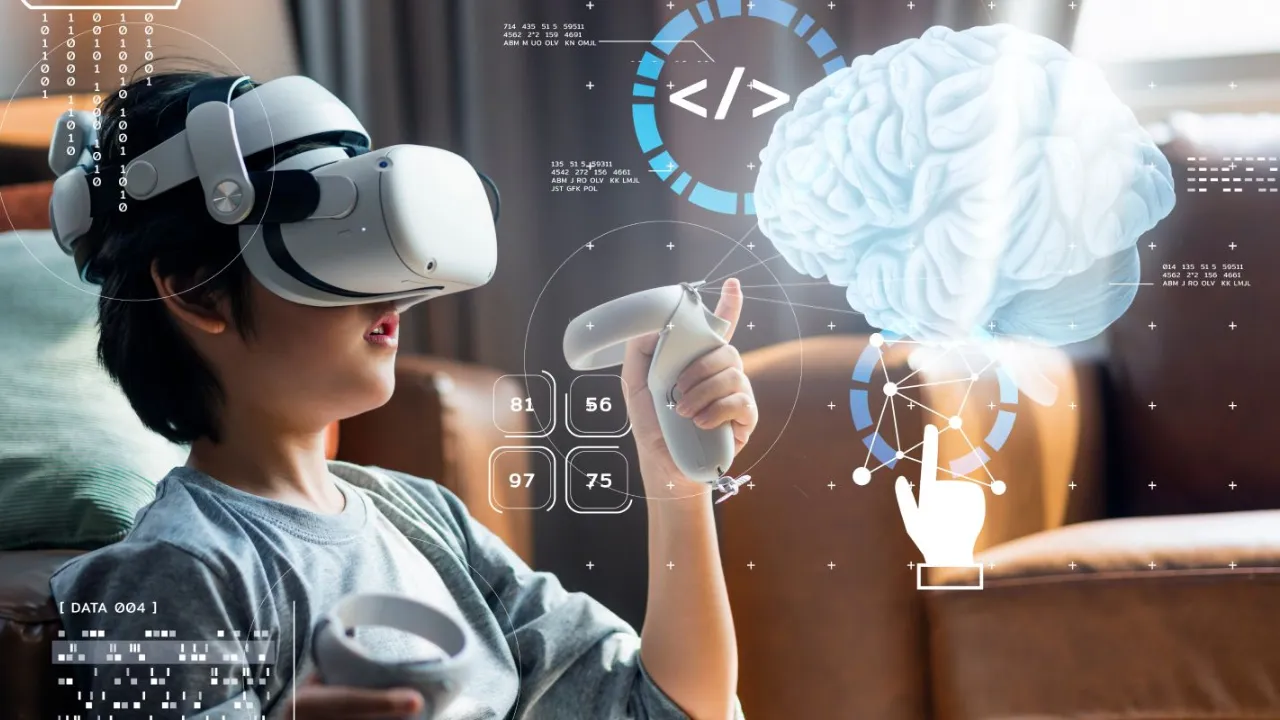Augmented & Virtual Reality in Classroom:In recent years, education has witnessed a shift from static learning environments to more immersive and interactive classrooms. This transformation is largely driven by the introduction of Augmented Reality (AR) and Virtual Reality (VR) technologies. No longer are students limited to two-dimensional textbooks or passive video lectures—now, they can step inside a human heart, walk through ancient Rome, or manipulate molecular structures in 3D.
As these technologies mature, they’re becoming more accessible to everyday classrooms. With increasing demand for student engagement, personalized learning, and STEM-focused instruction, AR and VR offer powerful ways to enhance comprehension, curiosity, and critical thinking in education.
Augmented & Virtual Reality in Classrooms
Augmented & Virtual Reality in Classrooms brings digital interactivity directly into the learning space. AR overlays digital content onto real-world views, while VR fully immerses students in computer-generated environments. Whether it’s a history class exploring the Colosseum in virtual Rome or a science lab using AR to visualize cell structures, these tools transform how information is absorbed and applied. As of 2025, schools are integrating AR/VR into core curriculum areas, from maths and science to languages and vocational training. These technologies not only foster engagement and retention but also cater to diverse learning styles and make education more inclusive and dynamic.
Overview Table
| Feature | Details |
| Technology | AR (interactive overlays); VR (full immersion via headsets) |
| Benefits | Increased engagement, experiential learning, enhanced retention |
| Classroom Applications | 3D models, virtual field trips, interactive simulations, creative storytelling |
| Tools in Use | Google Expeditions, CoSpaces Edu, Merge Cube, Nearpod |
| Emerging Trends | AI-driven learning, spatial computing, cloud-based VR streaming |
| Challenges | Cost, training, content development, accessibility |
| Future Prospects | Nationwide adoption, equity in access, haptic-enabled VR |
Defining AR & VR in Education
Understanding the distinction between AR and VR is key. Augmented Reality uses mobile devices, tablets, or smart glasses to overlay visuals onto the real world. Students can scan a page and see a 3D beating heart pop up or interact with a planetary system rotating on their desk.
In contrast, Virtual Reality uses headsets to transport students into fully simulated environments. They can visit Mars, conduct virtual dissections, or simulate emergency response scenarios. Together, AR and VR provide educators with tools to deliver multisensory learning that supports different cognitive strengths.
Benefits and Classroom Applications
AR and VR open up endless possibilities across various subjects:
- Boosts Engagement and Focus: Interactive visuals capture attention better than static slides or textbooks. Students remain alert and motivated throughout lessons.
- Enhances Retention and Understanding: When learners see, touch, and manipulate 3D content, they are more likely to remember and understand complex topics.
- Promotes Safe Experimentation: In virtual labs, students can conduct chemistry experiments without risk, or explore anatomy without a cadaver.
- Supports Different Learning Styles: Visual, auditory, and kinesthetic learners benefit from multisensory content.
- Encourages Collaboration: AR and VR tools often include shared environments for students to explore and build projects together.
- Increases Accessibility: For students with disabilities or those in remote areas, these technologies offer experiences they might not otherwise access.
AR / VR Tools in the Classroom
Several tools are making AR and VR feasible for everyday teaching:
- Google Expeditions: Offers guided virtual field trips to historical sites, underwater ecosystems, and even outer space.
- CoSpaces Edu: Allows students to build and code their own virtual worlds, reinforcing both subject knowledge and digital skills.
- Merge Cube: A handheld cube that students view through a device, turning it into a holographic display of objects like fossils or planets.
- Nearpod VR: Combines VR lessons with formative assessments and is compatible with low-cost headsets and tablets.
These platforms integrate with existing curriculum frameworks and offer intuitive interfaces, making adoption easier for teachers and students alike.
Trends & Future Outlook
The future of AR and VR in classrooms is full of promise:
- AI-Personalized Content: Adaptive VR systems analyze student responses and adjust difficulty or content accordingly.
- Mixed Reality (MR): Combining AR and VR to let students interact with digital objects anchored to physical space.
- Cloud-Based VR: Eliminates the need for expensive local hardware. Students access high-fidelity VR environments via cloud streaming platforms.
- Haptic Feedback and Multisensory VR: New developments are adding touch, smell, and sound to virtual lessons, increasing immersion.
- Global Accessibility: Countries like Australia and India are piloting AR/VR labs in public schools to bridge gaps in access.
As hardware becomes more affordable and content libraries grow, AR and VR will likely become standard in classrooms worldwide.
Implementation Challenges
Despite the advantages, several hurdles remain:
- High Initial Costs: While AR can use existing smartphones and tablets, full VR setups require headsets, controllers, and software subscriptions.
- Lack of Training: Many educators are unfamiliar with the technology and need professional development to use it effectively.
- Content Gaps: Not all subjects or curricula have suitable AR/VR modules yet, and content quality varies.
- Privacy Concerns: Student data collected by EdTech tools must be safeguarded to comply with regulations.
- Accessibility Issues: VR can cause motion sickness for some users, and not all devices are suitable for students with visual or motor impairments.
Schools must plan carefully, beginning with pilot programs, to overcome these barriers.
Practical Steps for Schools
Here’s how schools can start integrating AR and VR meaningfully:
- Start with AR: Use tablets or smartphones with simple apps to explore 3D models in science or geography.
- Train Teachers First: Professional development programs are essential to build teacher confidence and curriculum alignment.
- Choose Scalable Tools: Platforms like Nearpod and Merge Cube are cost-effective and curriculum-aligned.
- Focus on Core Subjects: Begin with subjects like biology, chemistry, or history where AR/VR has proven effectiveness.
- Evaluate Impact: Monitor engagement, academic performance, and student feedback to refine implementation strategies.
FAQs
1. What is the difference between AR and VR in classrooms?
AR overlays interactive visuals on the real world using devices like tablets, while VR immerses students in a digital environment using headsets.
2. Can AR and VR replace traditional teaching methods?
No. These tools are designed to enhance—not replace—traditional instruction by offering deeper, more engaging experiences.
3. Are AR/VR tools safe for young students?
Yes, when used with supervision and in moderation. However, VR sessions should be limited in duration to avoid discomfort or eye strain.
4. What budget should schools plan for AR/VR?
AR can start with minimal investment using mobile devices. VR requires more, with headsets costing anywhere from £200–£600 each, plus software licenses.
5. How can teachers create their own AR/VR content?
Platforms like CoSpaces Edu allow teachers and students to design interactive content. Training workshops can also help teachers learn to customize materials.
Final Thought
The potential of Augmented & Virtual Reality in Classrooms is far more than just a novelty. These tools are transforming passive learning into interactive journeys, encouraging exploration, empathy, and critical thinking. While challenges exist, they are surmountable with proper planning, training, and investment.
As schools aim to prepare students for an increasingly digital world, AR and VR offer a gateway to immersive, hands-on education that textbooks alone can’t deliver. Whether it’s a student stepping into Shakespeare’s Globe or assembling a virtual engine, the future of learning is truly three-dimensional.





